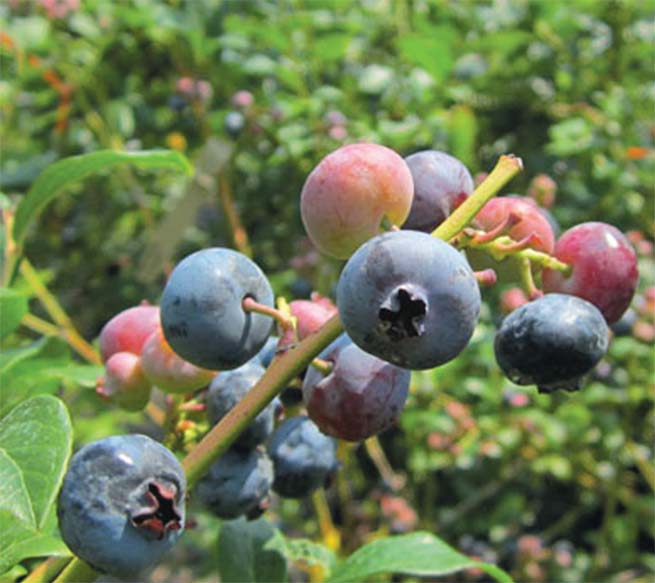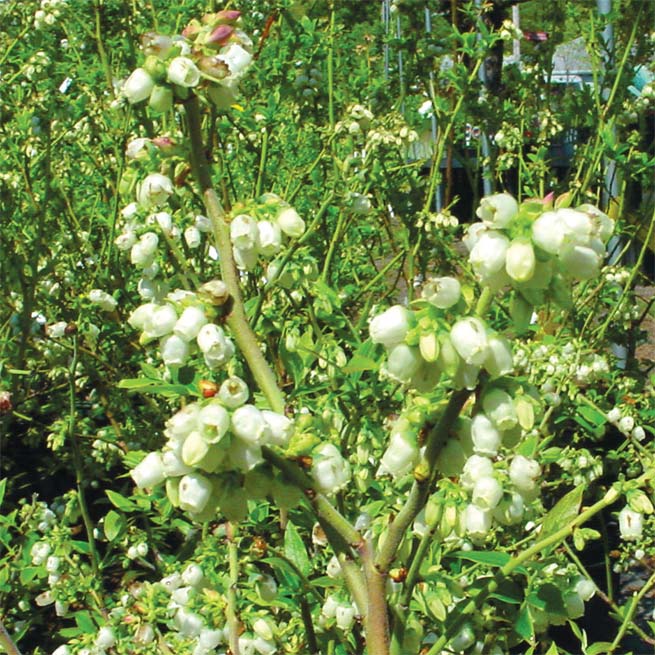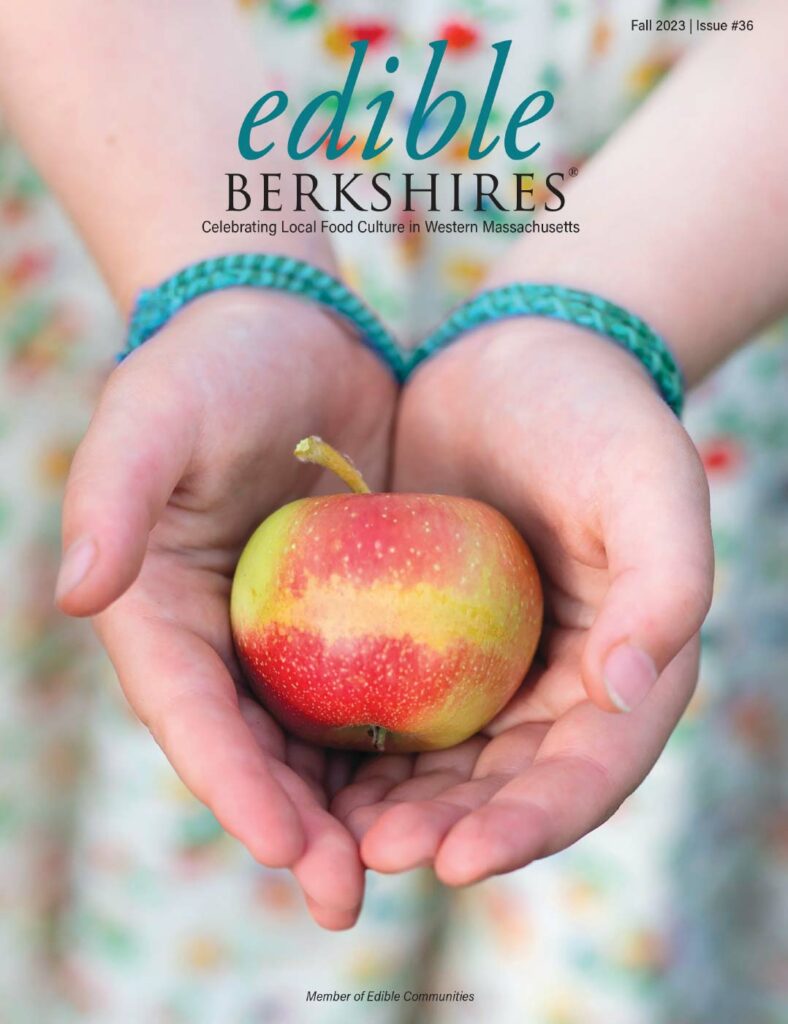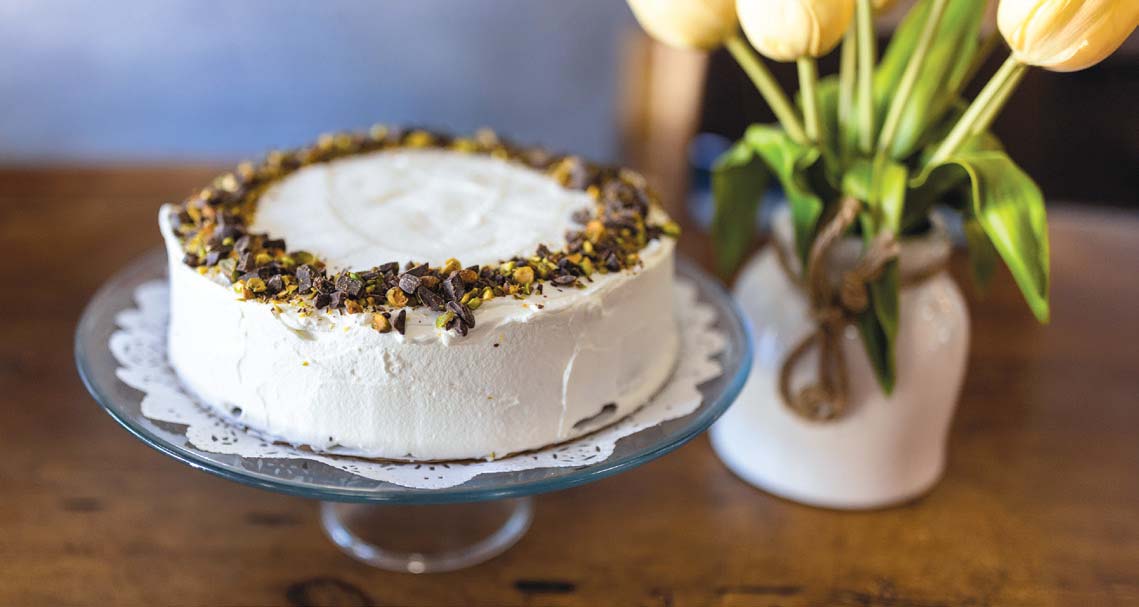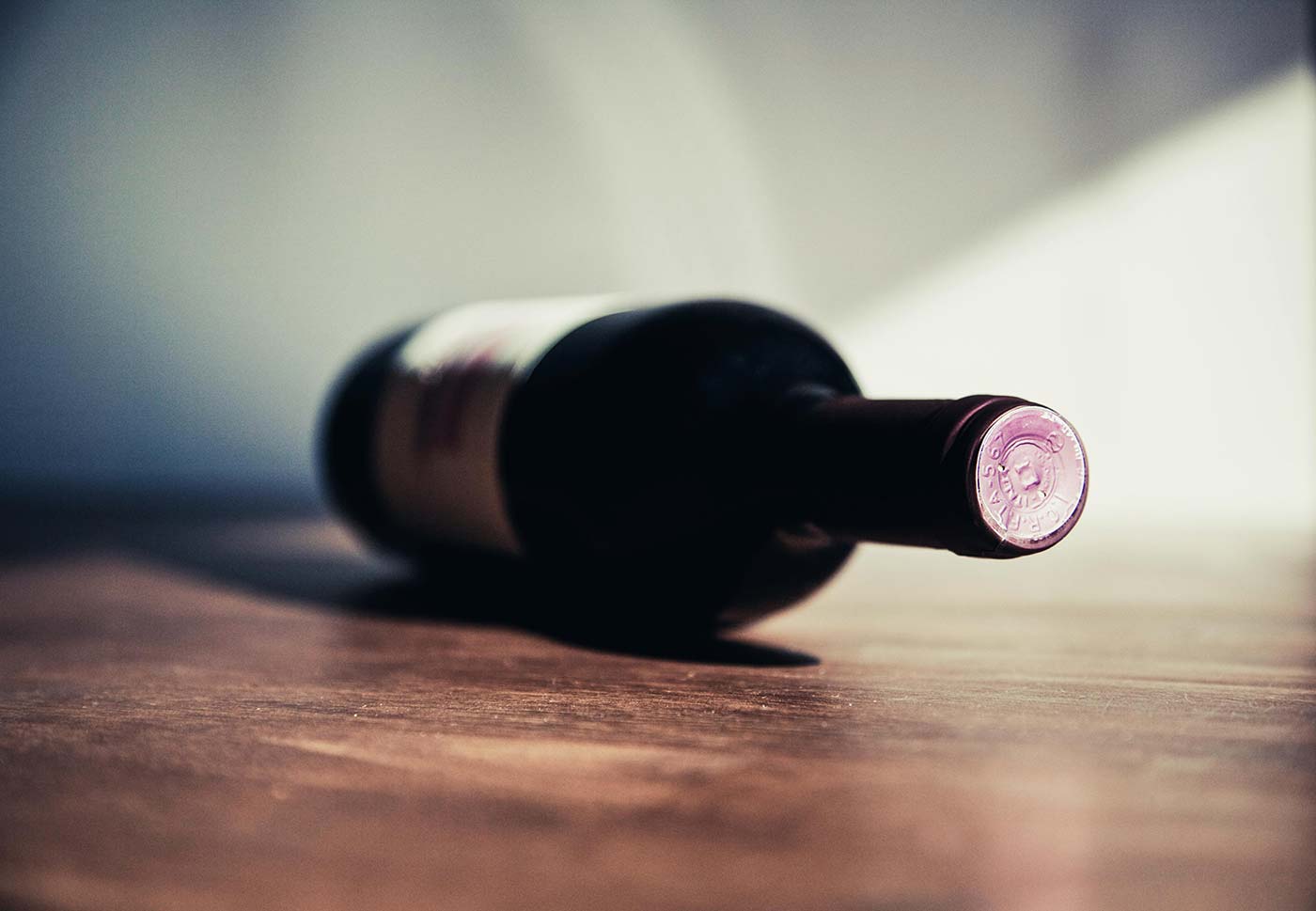Lusting for Spring, Summer & Fall
Make your landscape do double-duty—looking great while tasting great, too! The highbush blueberry (Vaccinium corymbosum) is an easy-care, multi-use shrub.
These attractive, well-behaved shrubs are rarely bothered by insects or diseases. In the spring, they are covered with white, bell-shaped flowers. Between July and September, depending on variety, mature plants produce hundreds of delicious berries. Then in the fall, the leaves turn a rich scarlet, orange or purple.
Blueberries grow wild over the eastern United States and are an important food for wildlife. To harvest your own crop of berries for fresh eating, baking and/or canning, you can choose varieties with different ripening dates, flavors and sizes. Then enjoy fresh-picked blueberries over a two- to three-month period!
In any case, plant two or more varieties to ensure good pollination and a larger crop. Ward’s offers, in order of ripening time, these highbush varieties: Blue Jay, Patriot, Blue Crop, Blue Ray and Jersey. Or, you might like the low-bush type, Vaccinium angustifolium—suitable as a groundcover!
Tricks for Success:
Position shrubs in full sun for plentiful yields and plan for a mature size of four feet wide by 10 feet tall.
Blueberries require acid soil with pH below 6.0 and as low as 4.5. Have the pH of your soil tested. The Western Mass. Master Gardeners ( WMassMasterGardeners.org) offer this service at local farmers’ markets in May or Ward’s staff can help you do it. If the pH is greater than 5.5 but less than 7.0, you can increase the acidity by amending your planting bed with sulfur in the form of sulfate (SO4). Check the pH annually and amend as needed. It is generally impractical to modify alkaline soils (pH greater than 7). Your soil type will affect the quantity of sulfur needed. In short, a light sandy soil needs less sulfur than a heavy clay soil, even if the starting pH is the same. If you’re not sure how much to add, stop in to Ward’s with the pH results of your soil. we can help you determine the correct amount of additives to reach the ideal growing conditions for your blueberries.
Blueberries have shallow roots and appreciate a steady supply of moisture. Prepare the bed for them by amending 12 to 20 inches down and three to fi ve feet across with plenty of organic matter and compost in the root zone. Add sulfur if required by your soil test. space shrubs about 6 to 8 feet apart. to keep them moist through the summer, mulch with wood chips, sawdust, oak leaves or shredded bark. And by the way, blueberries love coffee— grounds, that is. Coff ee grounds or cottonseed meal add organic material while also releasing nitrogen and acidifying the soil!
Prune according to the pruning schedule chart. After two years in the fi eld, you’ll want to select your best fruiting branches by pruning out weak twigs from the last summer’s growth. overproduction of fruit from failure to prune can dwarf the plant. to protect your scrumptious berries while they are ripening, plan to cover the plants as soon as the berries start to turn blue. Birds have more time to check on the ripening progress of the berries than we do and will eat many or most of them as they ripen! your cover can be as simple as remay netting (a lightweight polyester garden fabric) wrapped around each bush, or you can build a cage over many plants. Be sure to stake netting down, blocking access from the ground! Th ose berries are tasty and birds will go under the netting. ward’s blueberries will fruit this summer and bear a full crop after four to six years. Pruning after the third growing year, and annually after that, will produce the best yields. with proper care, this shrub can produce berries for decades!
Jodi Cahillane is coordinator for advertising and publicity at Ward’s Nursery & Garden Center in Great Barrington. A member of the Western Massachusetts Master Gardener Association, she has led classes on many garden topics. WardsNursery.com
PRUNING: LESS BUSH YIELDS MORE BLUEBERRIES
Don’t be afraid to prune! Blueberries fruit on the previous summer’s woody growth. Flower and fruiting buds form at the ends of these shoots. By pruning out twiggy and weak shoot growth, you will encourage better fruit production. Early spring is the best time to prune blueberries. In spring, you can identify winter-injured wood and remove it. Carbohydrates produced in autumn will also have had sufficient time to move into the roots and crown for storage. What’s a fruit bud? The fruit comes from the pollinated flowers. The flower buds are plump and rounded; leaf buds are small and pointed. Each flower bud may produce a cluster of five to eight berries. If all flower buds are left on, too many berries will be produced and many will be small and worthless. Also, short thin shoots will grow, resulting in poor fruiting wood for the following year’s crop. Good shoots harden-off as canes with a grayish-brown color and will be approximately pencil size or greater in diameter.
With enough sunlight, the new canes will start to produce fruiting laterals in the second year at a relatively low level in the bush and will be able to develop a large zone of fruiting wood in the third and fourth years. If the bush is allowed to get too dense, a new cane will take three or four years to produce nothing more than a tuft of fruiting twigs at the very top of the bush. Older blueberry bushes may grow weak and slow or stop production for a variety of factors. Conditions that weaken plants include overbearing due to improper pruning, poor soil drainage, insufficient fertilizer, drought injury, shade or crowding, scale injury and grubs feeding on the roots. After you correct the undesirable conditions, it is possible to rejuvenate the bushes by pruning as outlined under rejuvenation below.
| YEAR IN FIELD | PRUNING REQUIREMENTS |
| Planting Year and Year 2 | Very little pruning. Only short, weak, twiggy growth need be removed. Prune out any dead or broken twigs. |
| Spring Year 3 | Ready to prune for a small crop (½ to 1 pint per bush). Prune out dead or broken branches as well as any overlapping branches. Remove the thin, twiggy growth and concentrate the potential crop on a small number of stout, fruiting shoots. By limiting the cropping to only the strong shoots, the bush will continue to grow rapidly. A heavy crop at this time dwarfs the bush. |
| Spring Year 4 | Prune out dead or broken branches as well as any overlapping branches. Remove canes that have only small, weak fruiting twigs. Cut to the ground or to a strong side shoot near the ground. This will stimulate the sprouting of new canes from the base, which keeps a plant relatively “young.” Pruning allows adequate sunlight to penetrate the bush and promote the setting of fruit buds. Maintain a vase shape, narrower at the bottom and open in the center. |
| Pruning Mature Bushes Spring Year 5 and Older | Prune out dead or broken branches as well as any overlapping branches. The number of old canes to be removed depends on the rate of growth over the past several years and varies considerably over 6 years old, it may be necessary to remove two canes annually, due to changing growth rates. Canes of 1 inch diameter or greater will not produce as well and should be removed to encourage new canes to form. You can prune 20% of the bush at this time without affecting yield. Next after removing the older canes, eliminate any small, twiggy growth in favor of the stronger shoots. A limited amount of twiggy growth may be left in the lower portion of the bush. At this level shading is not a factor, and the fruit production from these twigs will add to the total crop. |
| Rejuvenating Old or Weakened Bushes | Rejuvenate old plants by removing a third to a half of the oldest canes. Tag one branch emerging from crown. Count the number of total canes in a circle and divide by 3. Remove the resulting number of canes. For example, if there are 15 canes, divide by 3 to come up with 5. Remove 5 canes by moving in a circle and cutting every third one. This will keep the bush symmetrical. Make large cuts at ground level. The remaining portion of the plant is allowed to bear heavily. More light should penetrate the plant and encourage new canes. Remove another third of the old canes the following spring, and so on. |


